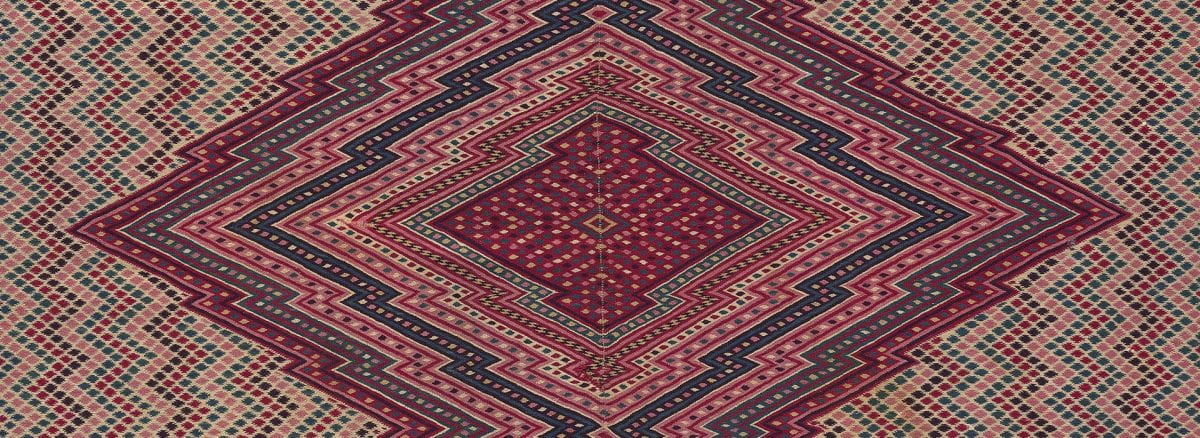Riding across the vast ranches of northern Mexico, male landowners, hacienda managers and other men wore embroidered chaps, silver spurs and sarapes — like this fine example — worn cloaked around their bodies, draped over a shoulder or sometimes pulled over the head as a poncho. Skillfully woven and expensive, the classic sarape was made in Mexico from about 1750 to 1840, but little is known about its origins.

When the Spanish first arrived in Mexico in 1519, they noted that Indigenous women, particularly the Tlaxcalans, were expert spinners, weavers and embroiderers. The Tlaxcalans’ repertoire included mantles (tilmas) of native cotton and agave fibers created on back-tensioned looms. The Spanish also came with their own textile traditions, bringing over merino and churro sheep, peddle looms and male weavers to colonial Mexico to fashion garments from wool.
By the 1570s Europeans were raising huge flocks of sheep in the open ranges far north of Mexico City. They founded the town of Saltillo here in 1577, and in 1591 they resettled communities of Tlaxcalans in villages nearby. By the end of the 16th century, Mexican and European men alike were wearing wool capes — likely precursors to the sarape — that were probably made on ranches, missions or in towns close to the sheep pastures.
In the 1750s Saltillo was a flourishing market town, and many sarapes were bought and sold at the famous Saltillo Trade Fair. Today, Saltillo claims to be the birthplace of this colorful and distinctive textile, and the city inaugurated the Museum of the Sarape in 2008.

